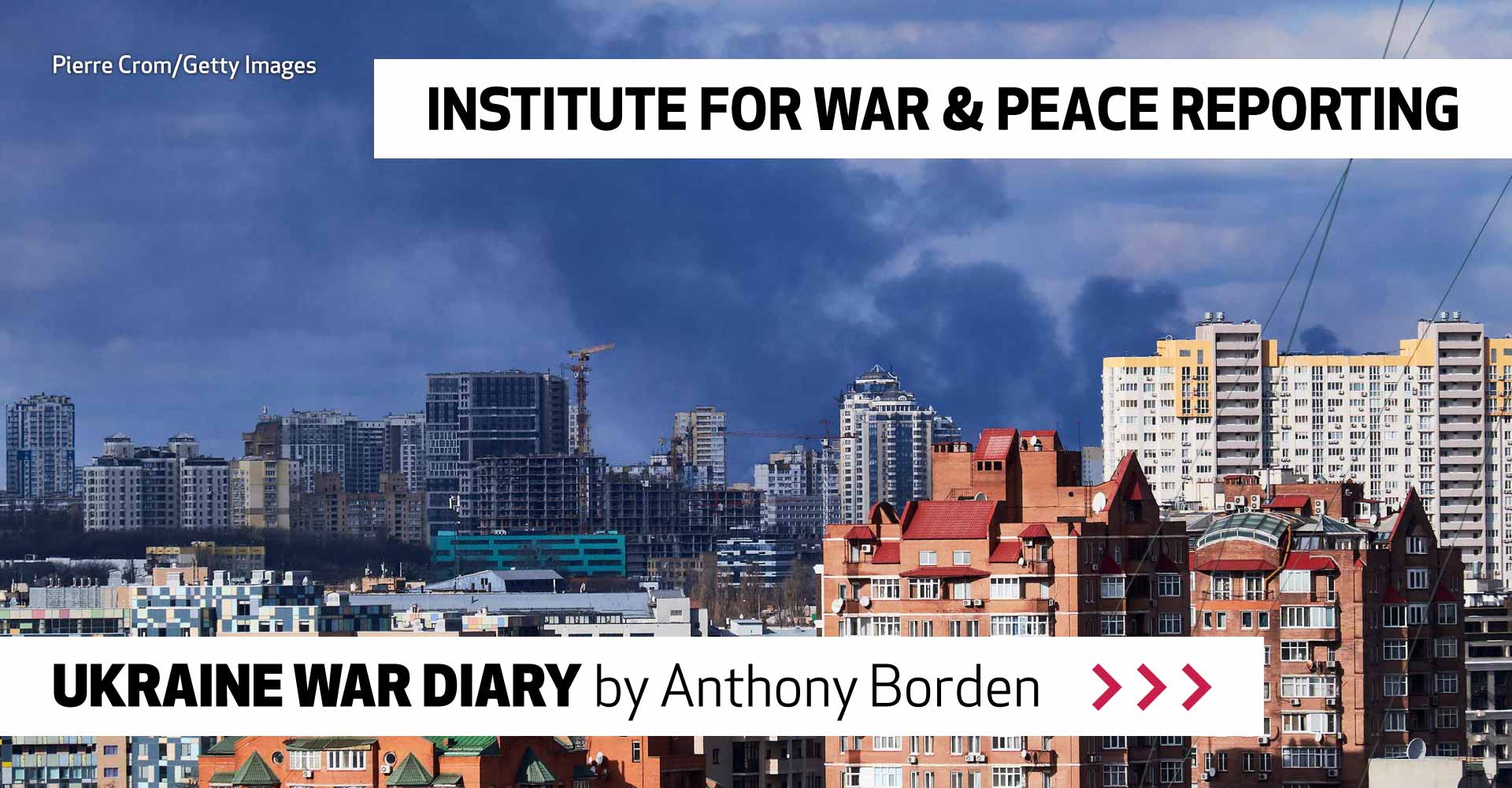Ukraine’s Local Media Organises
Scattered, few in number and lacking protective equipment, journalists collaborate to share news across the country.
Ukraine’s Local Media Organises
Scattered, few in number and lacking protective equipment, journalists collaborate to share news across the country.
While international attention focuses on the fire at Ukraine’s Zaporizhzhia nuclear plant and the shelling of the port city of Mariupol, local reporters warn that a growing humanitarian crisis by the Russian border in the north is going underreported.
Amid the swirl of disasters facing Ukraine, newsgathering and production in Ukraine remains a major challenge. In response, local media are turning to collaborative methods and social media to share news across the country.
According to Alyona Boiazinova, the advisor to the head of the Sumy regional administration, the cities of 47,000-strong Okhtyrka, and Trostianets, population 20,000, are facing a “humanitarian catastrophe”. Russian forces, she said, were shelling residential areas.
“No ambulances are allowed, bodies cannot be cleared from the streets, shelling all the time. The Russians are creating a massacre,” she said.
However, local reporters are unable to provide independent confirmation of official details and raise the alarm. According to Boiazinova, local media remain scattered, few in number and lacking any protective equipment, including critical flak jackets and helmets. Two international reporters, she added, were wounded and were in the local hospital.
To share news across the country, Boizinova explained, each region, or oblast, maintained its own Telegram and Facebook groups. Membership in these groups was limited to journalists known to the regional authority. Each group was operated differently by each authority, but they were used to provide news, announcements, videos, sometimes even to share jokes.
The Sumy group has around 100 members, and the process appears to work. A reference to the crisis in Sumy appeared in the website of the leading newspaper, Ukrainska Pravda, citing the Telegram group. The evening news also reported the situation briefly but without the images crucial to bringing a story alive.
Andrii Ianitsky, 38, a journalist and editor from Kyiv, explained that, in the circumstances, the Telegram group approach was effective.
Members review material and comment, helping confirm facts and correct errors.
“All the information in the Telegram group is verified in the group,” Ianitsky said. He showed how one claim of Russian tanks in a village was fact-checked by another member, who submitted a video of transport vehicles, writing, “Не танки.” Not tanks.
Indeed, a recent Ukrainska Pravda report, citing the Sumy administration Telegram group, warned that Russians had destroyed Okhtyrka’s thermal power plant and the population – deprived of heat and electricity – must be relocated urgently.
Yvgenny Kiselyov, 65, is one of Ukraine's best known TV presenters. He said that it was generally easy to distinguish between authentic and falsified footage.
He pointed to an extended video by a local citizen in a small town north of Kyiv purporting to show a dozen or more Russian tanks destroyed by military drones.
“I am a television journalist and I can understand footage I am seeing. This is for real, I trust these pictures,” he said.
There has also been extensive footage of captured Russian soldiers circulated on social media and used for propaganda purposes.
Kiselyov noted that while some clips of interviews with these soldiers appear awkward and obviously staged, most appear natural and true.
To assist production, several Ukrainian television news teams have joined forces, sharing information and producing all their material in one studio, which may also enhance collaborative fact-checking. Called United News, from February 24 the country’s main TV channels — 1+1, UA: Pershiy, Ukraine, STB, 2+2, K1, NTN, ICTV, Ukraine24, UNIAN, Rada, Kyiv, and others — have collaborated to highlight the day’s key news.
The government has issued an instruction to media not to report casualty figures among Ukrainian troops, and has asked citizens not to take or share videos of any troop movements or give any evidence of locations.
Any effort to take photos of soldiers on the street is quickly met with a reprimand by passers-by.
However, the biggest challenge for Ukrainian media remains the fighting. Yevheniy Sakun, a cameraman for LIVE TV, was the first media worker killed in the invasion, losing his life along with four other civilians when the Russians targeted the TV tower in Kyiv on March 1.
A consortium of media development groups is working to obtain flak jackets for local media and distribute them as quickly as possible. An experienced investigative reporter, appointed by the Lviv regional administration two years ago to manage its press relations, is seeking to expand its media centre to support local and international journalists, especially with increasing number arriving.
As conflict rages, many journalists are also fleeing with their families. According to the Lviv Media Forum, at least 75 displaced journalists have approached them for help in finding a place to stay. Ianitsky is one of them. He recently fled Kyiv, bringing his wife and family to the Moldovan border before coming to Lviv.
“I promised my wife I would not take up a weapon,” Ianitsky said. “I have never held one in my arms anyway. My passion is the media, and I can better serve Ukraine by continuing to work as a journalist.”
This publication was prepared under the "Amplify, Verify, Engage (AVE) Project" implemented with the financial support of the Ministry of Foreign Affairs, Norway.

